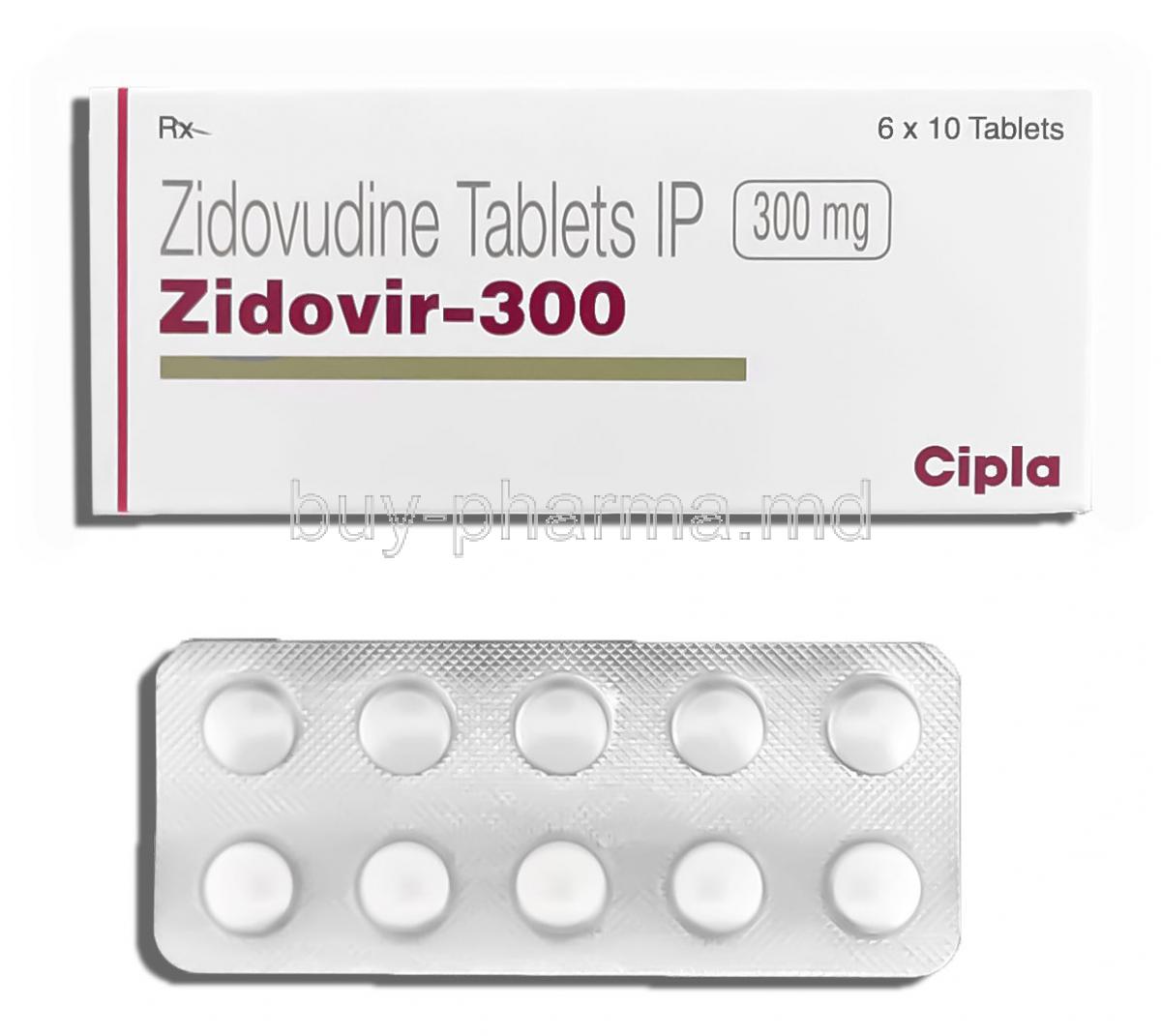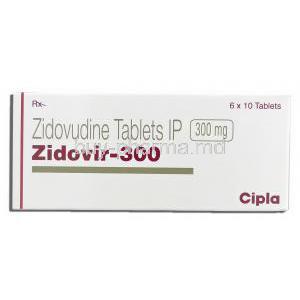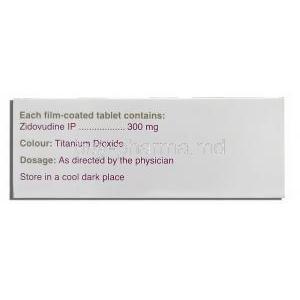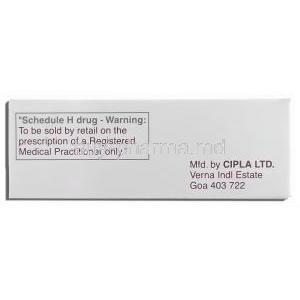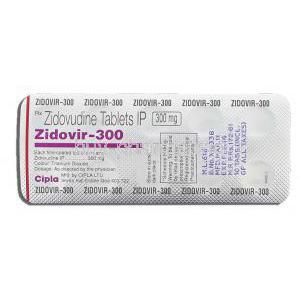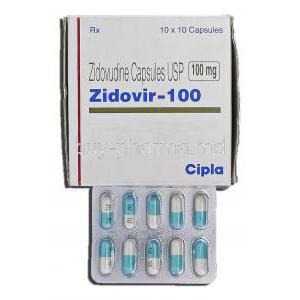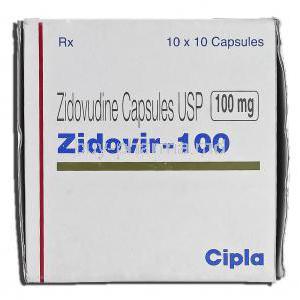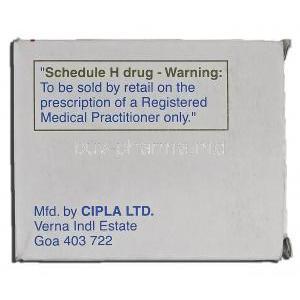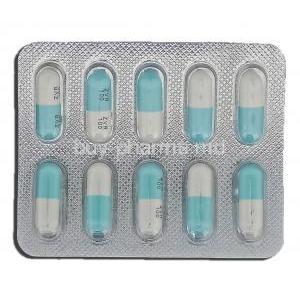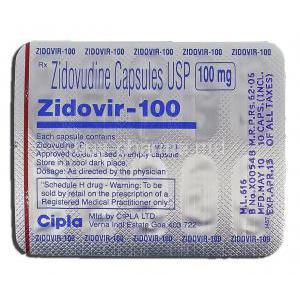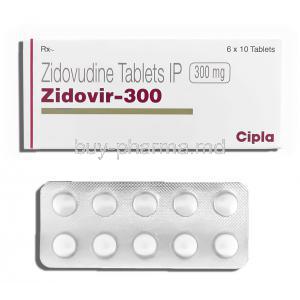Introduction to Zidovir (Zidovudine)
Overview of Zidovir and its Clinical Significance
Zidovir, containing the active ingredient zidovudine, is a cornerstone antiretroviral medication used in the management of human immunodeficiency virus type 1 (HIV-1) infection. By interfering with viral replication, it reduces viral load, preserves immune function, and enhances quality of life in individuals living with HIV. Its role extends beyond treatment, playing a key part in HIV prevention protocols.
History of Zidovudine Development and Approval
Originally synthesized in the 1960s as a potential anticancer compound, zidovudine's antiviral properties were later identified, leading to its approval in 1987 as the first antiretroviral drug for HIV. Its rapid integration into clinical practice transformed the outlook for HIV patients worldwide.
Therapeutic Classification
Zidovir belongs to the pharmacological class known as Nucleoside Reverse Transcriptase Inhibitors (NRTIs). These agents target the reverse transcriptase enzyme, essential for viral replication, halting the progression of the infection at a molecular level.
Global Brand Names and Generic Availability
Zidovudine is marketed under various brand names such as Retrovir, Azidothymidine (AZT), and Zidovir. Widely available in generic form, it ensures affordable access in both developed and resource-limited settings.
Medical Uses of Zidovir (Zidovudine)
FDA-Approved Uses
- Treatment of HIV-1 infection in adults and adolescents: Administered as part of combination antiretroviral therapy to suppress viral load and enhance immune function.
- Treatment of HIV-1 infection in pediatric patients: Age-appropriate dosing to manage infection and prevent disease progression.
- Prevention of maternal-fetal HIV transmission: Administered during pregnancy and labor to significantly reduce vertical transmission risk.
- Post-exposure prophylaxis (PEP): Used in occupational exposure cases, such as needlestick injuries, to prevent HIV infection.
Off-Label Uses
- Management of HIV-associated thrombocytopenia to improve platelet counts.
- Adjunctive therapy in resistant HIV strains within combination regimens.
- Investigational use against other retroviral infections beyond HIV.
How Zidovir (Zidovudine) Works
Mechanism of Action
Zidovudine is phosphorylated intracellularly into its active triphosphate form, which competes with natural nucleosides for incorporation into viral DNA. Once integrated, it causes premature DNA chain termination, blocking viral replication.
Inhibition of Viral Replication
By halting reverse transcription, zidovudine disrupts the essential step of converting viral RNA into DNA, thereby preventing the establishment of proviral DNA in host cells.
Pharmacodynamics and Pharmacokinetics
The drug demonstrates rapid oral absorption, with extensive distribution into bodily tissues, including the central nervous system. Zidovudine undergoes hepatic metabolism and renal excretion, necessitating dose adjustments in certain patient populations.
Resistance Profile
Resistance can develop through point mutations in the reverse transcriptase gene. Cross-resistance with other NRTIs may occur, highlighting the importance of combination therapy.
Composition and Formulations
- Active ingredient: Zidovudine.
- Dosage forms: Tablets, capsules, oral solution, and intravenous injection.
- Inactive ingredients: May include excipients such as cellulose, magnesium stearate, and coloring agents.
- Strengths: Commonly available in 100 mg, 300 mg tablets, and 10 mg/mL oral solution.
Dosage and Administration Guidelines
General Adult Dosage
Standard adult dosing involves 300 mg twice daily, often in combination with other antiretrovirals.
Dosage in Combination Therapy
Integrated into fixed-dose combinations or individualized regimens to maximize efficacy and minimize resistance.
Pediatric Dosage
- Administered according to weight-based calculations.
- Oral solutions facilitate accurate dosing in infants and children.
Pregnancy and Labor Dosage
Special dosing schedules during pregnancy and intrapartum administration are designed to significantly reduce the risk of HIV transmission to the newborn.
Dose Adjustments
- Renal impairment: Dose reduction may be required.
- Hepatic impairment: Caution and potential adjustment based on liver function tests.
- Hematologic toxicity: Dose modification or temporary discontinuation may be necessary.
Possible Side Effects of Zidovir (Zidovudine)
Common Side Effects
- Headache
- Nausea and vomiting
- Fatigue
- Gastrointestinal discomfort
- Muscle pain and mild anemia
Serious Side Effects
- Severe anemia and neutropenia
- Myopathy and muscle weakness with prolonged use
- Lactic acidosis with hepatomegaly and steatosis
- Immune reconstitution syndrome
Drug Interactions with Zidovir (Zidovudine)
- Interactions with other antiretrovirals such as stavudine and ribavirin, which may antagonize effects.
- Increased hematologic toxicity risk when combined with agents like ganciclovir or interferon-alpha.
- Considerations in hepatic metabolism pathways, including CYP450 interactions.
- Alcohol may exacerbate hepatotoxic effects and should be consumed with caution.
Warnings and Precautions
Risk of Hematologic Toxicity and Regular Blood Monitoring
Zidovudine therapy carries a well-recognized risk of hematologic complications, including anemia and neutropenia. These effects are more likely in advanced HIV disease or in patients with pre-existing bone marrow suppression. Regular complete blood count (CBC) assessments are critical to detect abnormalities early, enabling timely intervention such as dose adjustment or therapy interruption.
Hepatic Toxicity and Risk of Lactic Acidosis
Hepatotoxicity, characterized by elevated transaminases and hepatomegaly with steatosis, can occur. Zidovudine may also precipitate lactic acidosis, a rare but potentially fatal condition caused by mitochondrial toxicity. Patients should be monitored for symptoms such as persistent nausea, vomiting, abdominal pain, and unexplained fatigue.
Myopathy Risk with Prolonged Use
Chronic administration of zidovudine has been linked to the development of myopathy, presenting as muscle weakness and pain. This condition is thought to arise from mitochondrial damage in muscle tissue and warrants consideration in patients reporting neuromuscular symptoms.
Special Caution in Patients with Hepatitis Co-infection
Individuals co-infected with hepatitis B or C viruses are at increased risk of hepatic decompensation during antiretroviral therapy. Close liver function monitoring is essential, and dosage modifications may be required to prevent further hepatic injury.
Monitoring Parameters During Therapy
- Complete blood count at baseline and periodically
- Liver function tests at regular intervals
- Creatine kinase levels in patients with muscle symptoms
- Serum lactate in symptomatic individuals
Contraindications for Zidovir Use
Known Hypersensitivity to Zidovudine or Formulation Components
Patients with documented hypersensitivity reactions to zidovudine or any excipients should not receive the drug due to the risk of severe allergic responses.
Severe Anemia or Bone Marrow Suppression
Zidovudine should be avoided in patients with profoundly low hemoglobin or significant bone marrow suppression, as it may exacerbate hematologic deficits.
Previous History of Significant Lactic Acidosis During NRTI Therapy
A history of lactic acidosis related to nucleoside analogue treatment is a contraindication due to the heightened risk of recurrence.
Careful Administration Guidelines
Use in Patients with Pre-existing Hematologic Disorders
Special care is required in those with baseline anemia, leukopenia, or other hematologic abnormalities, with more frequent monitoring advised.
Renal or Hepatic Dysfunction Management
In renal impairment, zidovudine clearance is reduced, necessitating dosage adjustments. Patients with hepatic impairment require careful monitoring for toxicity and altered drug metabolism.
Long-term Therapy Safety Monitoring
Extended use mandates vigilance for cumulative toxicities, including myopathy, lipodystrophy, and mitochondrial dysfunction.
Polypharmacy Management in HIV Patients
Given the frequent use of complex regimens, potential drug-drug interactions should be reviewed regularly to prevent additive toxicities or reduced therapeutic efficacy.
Special Population Considerations
Administration to Elderly Patients
Age-related changes in organ function may increase susceptibility to adverse effects. Lower starting doses and cautious titration are advisable, accompanied by routine monitoring.
Dose Adjustments and Monitoring
Renal and hepatic function tests should guide ongoing dosage modifications in elderly patients to avoid accumulation and toxicity.
Administration to Pregnant and Nursing Women
Zidovudine has demonstrated efficacy in reducing mother-to-child HIV transmission when used during pregnancy and labor. It is generally considered safe for use during pregnancy under medical supervision.
Breastfeeding Considerations and HIV Transmission Prevention
In settings where safe alternatives exist, breastfeeding is generally discouraged in HIV-positive mothers to eliminate postnatal transmission risk, regardless of zidovudine use.
Administration to Children and Infants
Weight-based dosing ensures accuracy in pediatric populations. Liquid formulations facilitate administration in infants and small children, with regular growth and development assessments recommended during therapy.
Overdosage and Emergency Management
Symptoms of Zidovudine Overdose
Acute overdose may present with pronounced fatigue, headache, nausea, hematologic suppression, and in severe cases, lactic acidosis.
Recommended Treatment and Supportive Care
There is no specific antidote. Management includes symptomatic and supportive measures, close clinical observation, and laboratory monitoring. Hemodialysis may partially remove the drug.
Prognosis Following Overdose Incidents
With prompt intervention, recovery is typically complete. However, severe complications such as lactic acidosis may be life-threatening without immediate care.
Storage and Handling Precautions
Recommended Storage Temperature and Light Protection
Store zidovudine tablets and oral solutions at controlled room temperature, away from excessive heat and moisture. Protect from direct light to preserve potency.
Shelf-life and Stability of Oral and Injectable Formulations
Oral formulations generally remain stable until the manufacturer’s expiration date if stored correctly. Injectable preparations should be used within specified time frames after opening or reconstitution.
Safe Disposal Practices for Expired or Unused Medication
Expired or unused zidovudine should be disposed of through pharmaceutical take-back programs or according to local hazardous waste disposal guidelines to prevent environmental contamination and accidental ingestion.
Zidovir, Zidovudine FAQ
- What is the drug zidovudine used for?
- Is zidovudine used in chemotherapy?
- How is zidovudine given?
- How long should a baby take zidovudine?
- How to know if zidovudine is working?
- What is another name for zidovudine?
- Does zidovudine cause bone marrow suppression?
- How many weeks of gestation for zidovudine?
- Why is zidovudine hazardous?
- Can zidovudine cause anemia?
- What will the nurse teach about zidovudine?
- Is zidovudine taken on an empty stomach?
- Does zidovudine cause renal failure?
- When to start zidovudine in newborns?
- What does zidovudine do in babies?
- Does zidovudine cause constipation?
- How to take zidovudine?
- Why does zidovudine cause anemia?
- How long does a baby take zidovudine after birth?
What is the drug zidovudine used for?
Zidovudine is used to slow the progression of disease in patients infected with HIV who have advanced symptoms, early symptoms, or no symptoms at all.
Is zidovudine used in chemotherapy?
Yes
How is zidovudine given?
Zidovudine can be taken by mouth or through a vein.
How long should a baby take zidovudine?
At least 6 weeks
How to know if zidovudine is working?
The medication kicks in immediately even if you can't see a difference.
What is another name for zidovudine?
Azidothymidine
Does zidovudine cause bone marrow suppression?
Zidovudine can cause bone marrow toxicity which can lead to anemia.
How many weeks of gestation for zidovudine?
4-34 weeks' gestation
Why is zidovudine hazardous?
Serious side effects include liver problems, muscle damage, and high blood lactate levels
Can zidovudine cause anemia?
Yes
What will the nurse teach about zidovudine?
Zidovine does not cure HIV but only reduces future transmission.
Is zidovudine taken on an empty stomach?
Zidovudine can be taken with or without food
Does zidovudine cause renal failure?
No
When to start zidovudine in newborns?
As soon as possible
What does zidovudine do in babies?
It prevents HIV from spreading to the newborn.
Does zidovudine cause constipation?
Yes
How to take zidovudine?
Zidovudine comes as a capsule, tablet, and syrup to take by mouth. It is usually taken twice a day by adults and two to three times a day by infants and children.
Why does zidovudine cause anemia?
Zidovudine is basically a version of a thing called thymidine. It messes with how our cells make DNA, which can lead to a type of anemia that makes your red blood cells bigger than normal.
How long does a baby take zidovudine after birth?
4-6 weeks

